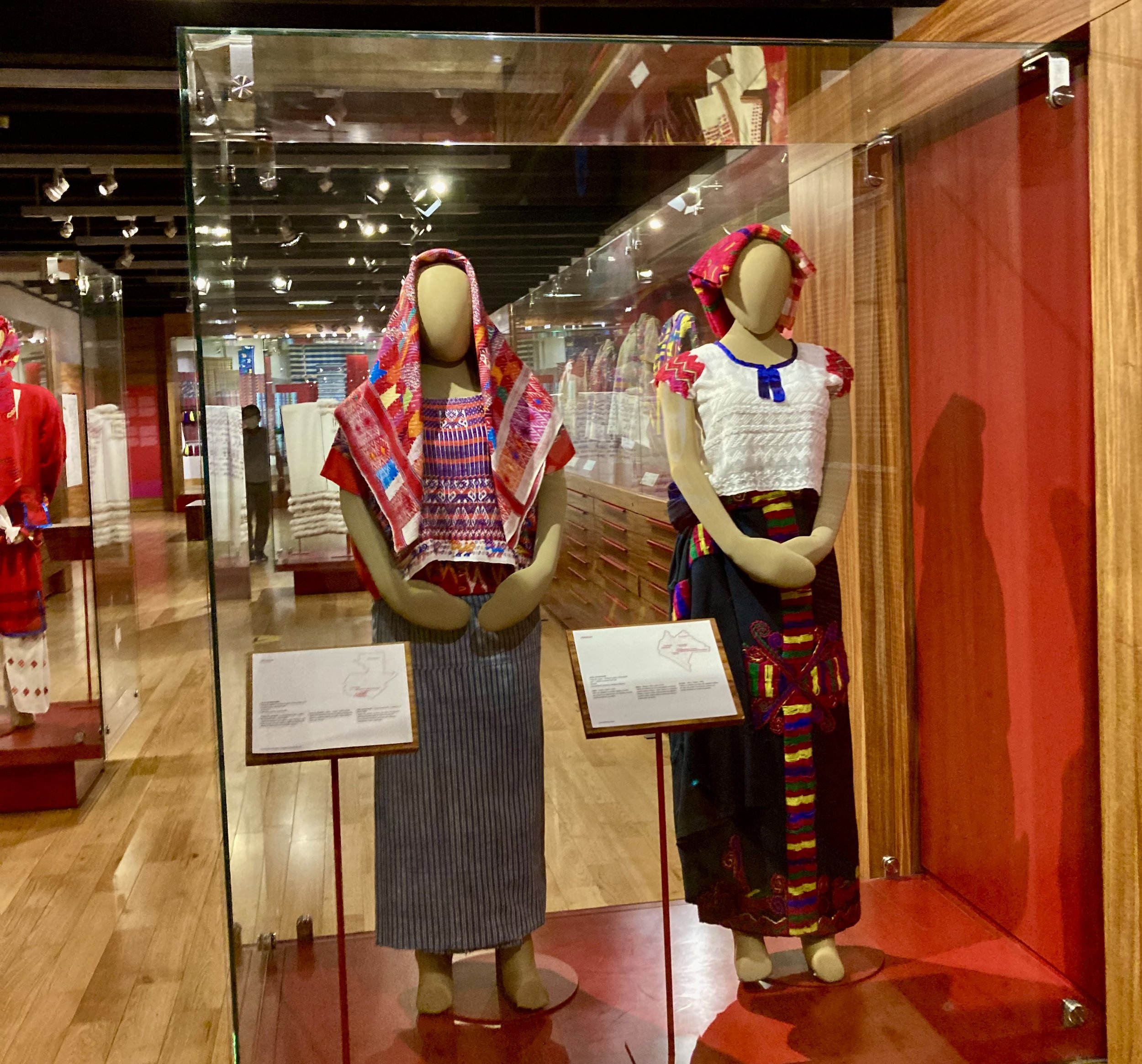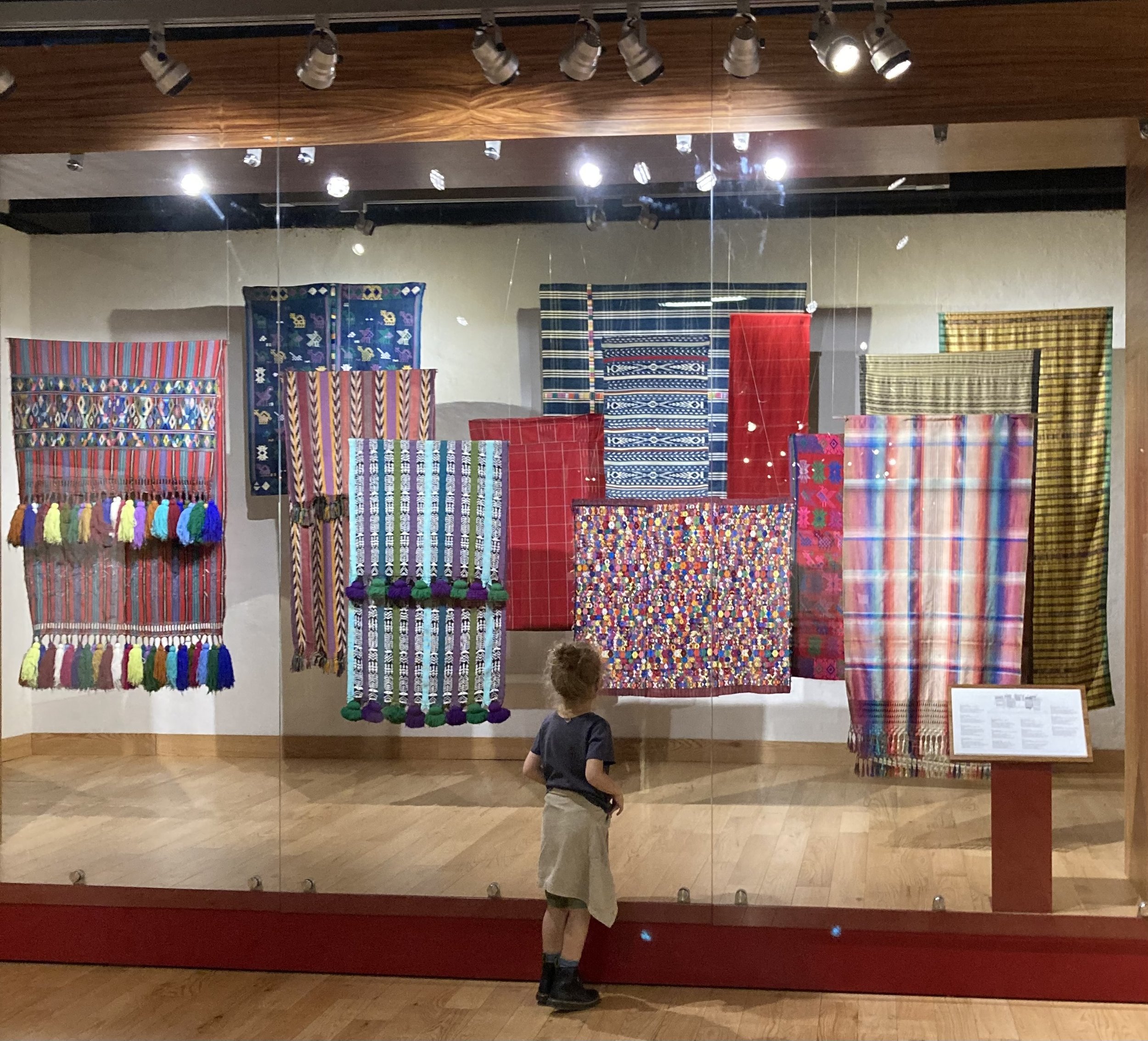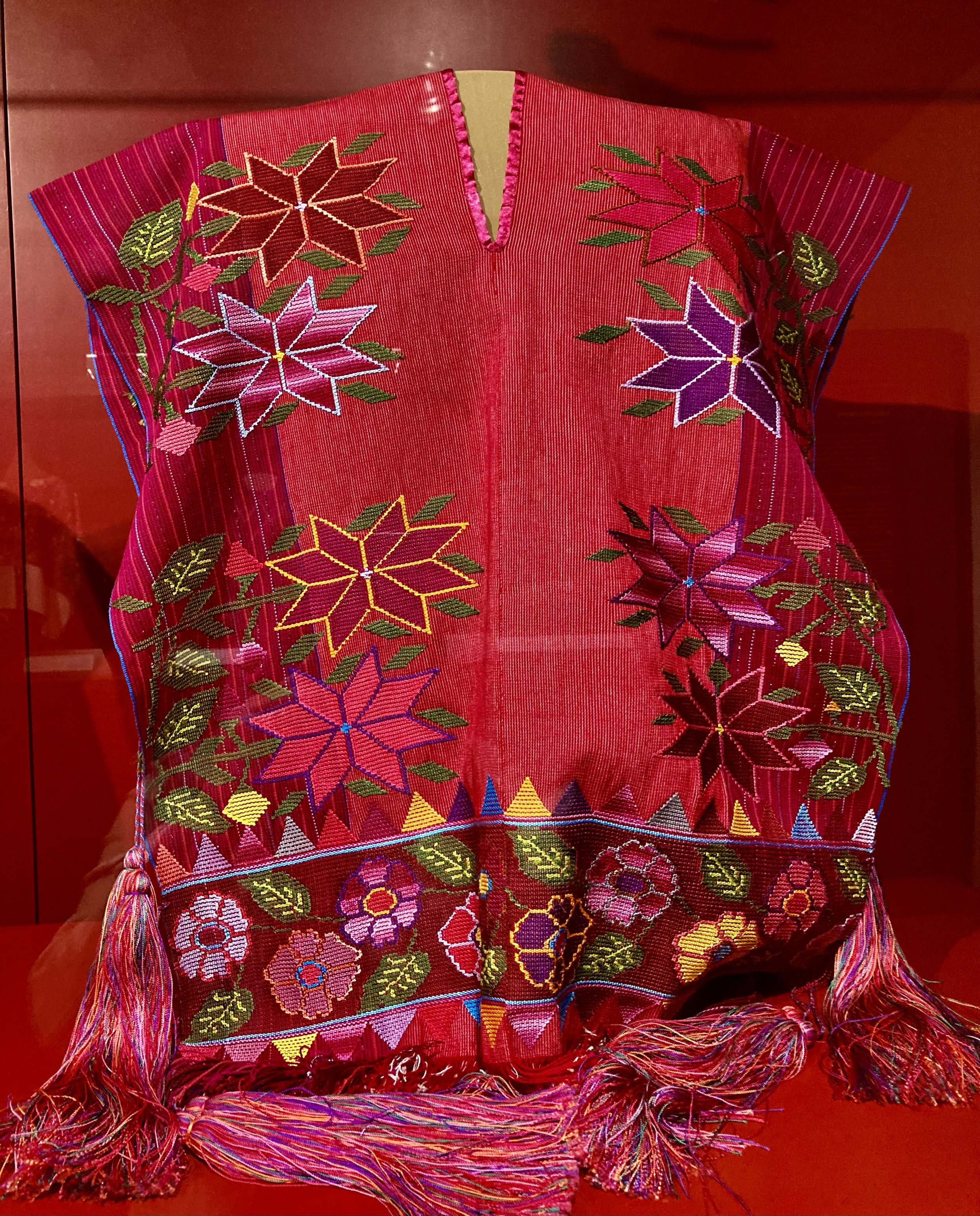Centro de Textiles del Mundo Maya Museum
Mayan Huipil Dress
The Centro de Textiles del Mundo Maya collection includes over 2,500 pieces (many are huipil). Mayan women have been wearing the huipil since at least the Classic period (250-900 A.D). Despite slight changes over the centuries, the huipil has always been made on the back-strap loom. The ancient and modern versions share several characteristics, among them, the supplementary weft and the rhombus, which is representative of the world according to the ancient Mayan cosmovision.
Weaving Fabrics
Mayan weavers have typically used cotton (white and brown) and agave fibers (henequen, maguey, pita and ixtle) to produce their yarn. Spinning yarn involved grouping and binding fibers together, by lining them up and twisting them - through the use of the spindle and the whorl - to form continuous, elastic and resistant strands of thread.
Nature Based Dyes
Two types of dyes are used to tint white cotton: dyes from plants like indigo, honeysuckle, Mexican marigold, annatto and logwood; and dyes from living creatures such as red dye from cochineals and purple dye from sea snails.
Ancient Technology
The back-strap loom is still used among Mayan weavers. It consists of wooden rods, which are known as enjulios and are placed at each end. The warp threads - arranged vertically and constituting the foundation of the weave - are attached to the enjulios. To achieve the level of tension required for weaving, the top enjulio is tied to a post or tree, while the bottom enjulio is attached to a strap that is wrapped around the weavers waist.
Wool & Silk Threads
Wool and silk were first introduced in the Americas in the 16th century during Spanish ‘rule’. Mayan artisans incorporated these new materials into their work. Wool was immediately taken up in colder climates, particularly in the Highlands of Chiapas, where woven-wool garments are still produced.
Embroidered Textiles
Alongside these developments (introduction of wool and silk etc..) was the introduction of embroidery. This technique involves attaching threads to the surface of finished cloth with the help of a needle, which is passed through the fabric. The stitches typically used within the Mayan region include: the cross stitch, the scapular stitch, the basting stitch, and for one or both sides, the chain stitch and the blanket stitch.
*all text original to Museum exhibit placards.






